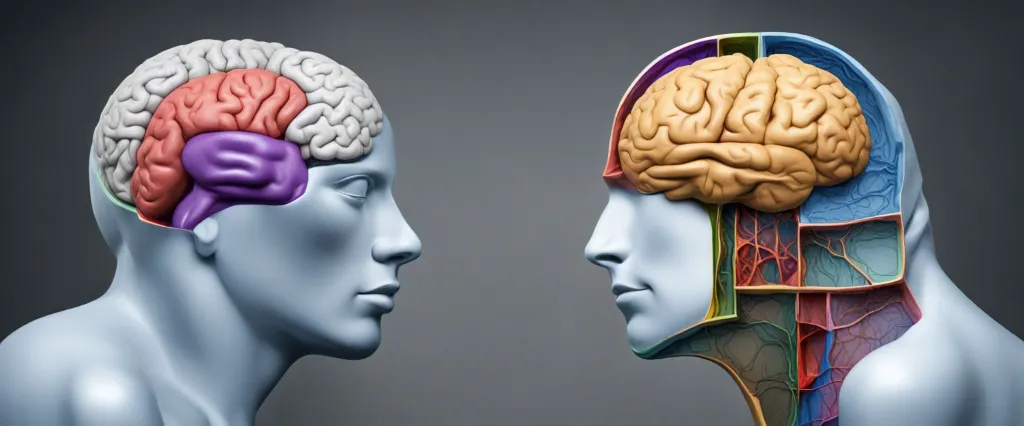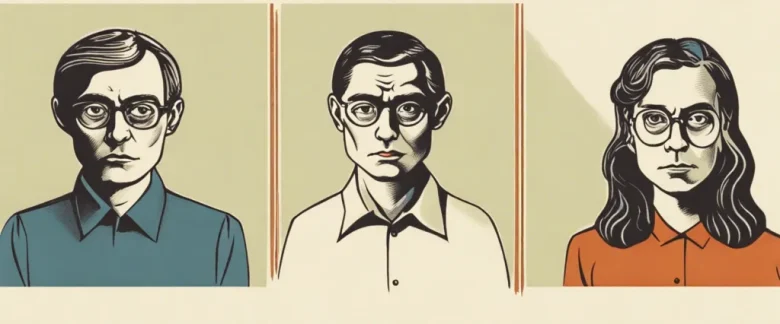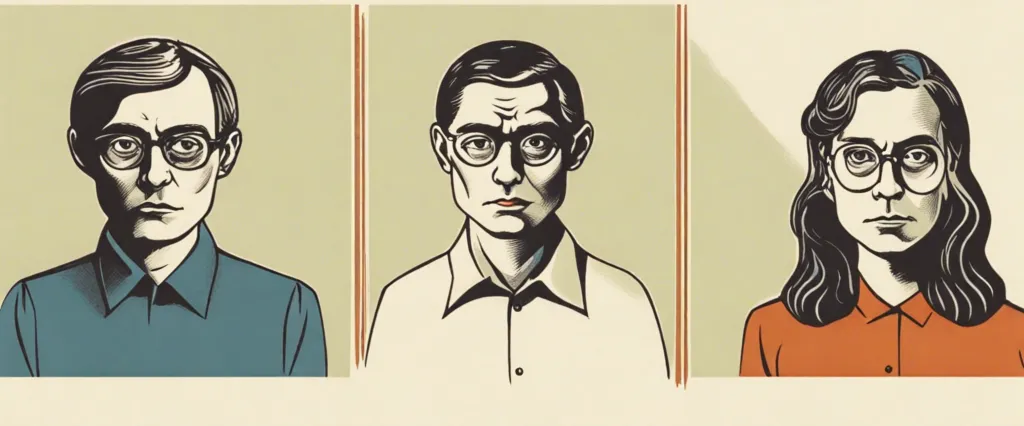In “The Divided Self,” renowned psychiatrist R.D. Laing explores the concept of schizophrenia as a natural and understandable response to the often confusing and contradictory demands of society. Laing challenges the prevailing notion that schizophrenia is a purely biological disorder, arguing instead that it is a complex interaction between an individual’s inner world and the external environment. Laing’s unique perspective and groundbreaking work continue to influence the field of psychiatry to this day. Born in Glasgow in 1927, R.D. Laing was a Scottish psychiatrist who gained international acclaim for his radical views on mental illness and the nature of the self.
Chapter 1: Introduction to the concept of the divided self and its implications.
In Chapter 1 of “The Divided Self” by R.D. Laing, the author introduces the concept of the divided self and its implications. Laing argues that many individuals experience a split within themselves, where they feel disconnected from their true selves and instead adopt a false persona to navigate the demands of society. This internal division can lead to feelings of alienation, emptiness, and confusion.
Laing explores the origins of the divided self, suggesting that it is rooted in early childhood experiences and reinforced by societal norms and expectations. He delves into the impact of family dynamics, cultural influences, and societal structures on the development of the divided self.
The implications of the divided self are far-reaching, affecting individuals’ relationships, identity formation, and mental well-being. Laing suggests that embracing and integrating the different aspects of the self is essential for achieving wholeness and authenticity. He emphasizes the importance of self-awareness, self-acceptance, and self-compassion in overcoming the divide within oneself.
Overall, Chapter 1 sets the stage for the exploration of the divided self throughout the rest of the book, highlighting the complexity and significance of this internal struggle in contemporary society.
Chapter 2: Exploration of the nature of identity and the construction of the self.
In Chapter 2 of R.D. Laing’s book “The Divided Self,” the focus is on the exploration of the nature of identity and the construction of the self. Laing delves into the idea that identity is not a fixed and stable concept, but rather something that is continually constructed and reconstructed through interactions with others and the environment.
Laing discusses the influence of social norms, expectations, and cultural beliefs on the formation of one’s identity. He argues that individuals often feel pressured to conform to societal standards and suppress their true selves in order to fit in and avoid rejection. This inner conflict between the true self and the false self, according to Laing, can lead to feelings of alienation, anxiety, and a sense of disconnection from oneself and others.
Laing also explores the concept of ontological insecurity, which refers to the uncertainty and instability individuals experience when they are not sure of who they truly are. This lack of a stable sense of self can result in fragmentation and a sense of being divided within oneself.
Overall, Laing’s exploration of identity in this chapter challenges traditional notions of selfhood and highlights the complexities and contradictions inherent in the construction of the self. He emphasizes the importance of self-awareness, authenticity, and self-acceptance in achieving a more integrated and whole sense of self.
Chapter 3: Insights into the dynamics of interpersonal relationships and their impact on the self.
In Chapter 3 of “The Divided Self” by R.D. Laing, the author delves into the complexities of interpersonal relationships and their profound effect on individual identity. Laing explores how the dynamics within relationships can shape, influence, and ultimately fragment the self. He discusses how our interactions with others, particularly in early childhood, can lead to the development of conflicting internal narratives and identities.
Laing emphasizes the concept of losing oneself in relationships, where individuals may struggle to maintain a sense of their own autonomy and integrity. He explores how individuals may adopt false selves to fit in with societal norms, leading to a disconnection from their true feelings and experiences. The impact of these interpersonal dynamics can result in feelings of alienation, confusion, and a sense of inner fragmentation.
Through case studies and examples, Laing illustrates how individuals may experience inner turmoil and a sense of disconnection from their authentic selves due to the influence of interpersonal relationships. He highlights the importance of recognizing and understanding these dynamics in order to foster a more authentic and integrated sense of self. Ultimately, Laing challenges readers to explore the complexities of interpersonal relationships and their profound impact on personal identity.
Chapter 4: Examination of the role of society and culture in shaping individual identity.

In Chapter 4 of “The Divided Self” by R.D. Laing, the author explores the significant impact that society and culture have on shaping an individual’s identity. Laing delves into how societal norms and cultural expectations can constrain individuals, leading to feelings of alienation and a fragmented sense of self. He discusses how the pressures to conform to social standards can cause individuals to suppress their true selves, creating a disconnect between their inner experiences and outward expressions.
Laing also delves into the ways in which societal structures, such as family dynamics and institutions, can contribute to the development of mental illness and emotional distress. He argues that the rigid roles prescribed by society can lead individuals to internalize feelings of inadequacy and self-doubt, ultimately leading to a sense of estrangement from one’s authentic self.
Overall, Laing emphasizes the importance of recognizing and challenging the societal and cultural influences that shape individual identity. By understanding the ways in which societal expectations limit personal authenticity, individuals can begin to reclaim their true selves and cultivate a more integrated sense of identity. The chapter encourages readers to critically examine the role of society in shaping their identities, and to consider how they can navigate these influences to foster a more authentic and fulfilling sense of self.
Chapter 5: Analysis of mental illness and its relationship to the divided self.
In Chapter 5 of “The Divided Self” by R.D. Laing, the author delves into the analysis of mental illness and its relationship to the divided self. Laing discusses how individuals experiencing mental illness often struggle with a fragmented sense of self, leading to a disconnect between their inner thoughts and emotions and their external reality.
Laing explores the concept of the “ontological insecurity” experienced by those with mental illness, where they feel a profound sense of alienation from themselves and the world around them. He argues that society’s rigid norms and expectations can exacerbate this sense of division within the self, contributing to the development of psychological disorders.
The chapter also delves into the role of family dynamics in shaping an individual’s sense of self and how dysfunctional relationships within the family can contribute to the development of mental illness. Laing emphasizes the importance of understanding and addressing the underlying psychological issues that contribute to the divided self in order to effectively treat mental illness.
Overall, Chapter 5 offers a thought-provoking analysis of the complex relationship between mental illness and the divided self, shedding light on the underlying factors that contribute to psychological disorders and the importance of addressing these issues in therapy.
Chapter 6: Discussions on the experience of alienation and fragmentation in modern society.
In Chapter 6 of The Divided Self by R.D. Laing, the author delves into the experience of alienation and fragmentation in modern society. He explores how individuals in contemporary society often feel disconnected from themselves, others, and the world around them, leading to a sense of isolation and profound inner turmoil.
Laing discusses how the pressures and demands of modern life can contribute to feelings of alienation and fragmentation, causing individuals to lose touch with their authentic selves and struggle to maintain a sense of coherence and stability. He highlights the prevalence of disconnection and disintegration in relationships, as well as the impact of societal expectations and cultural norms on individual identity.
Through in-depth analyses of clinical cases and personal narratives, Laing illustrates the ways in which alienation and fragmentation manifest in different aspects of human experience, from interpersonal relationships to self-perception and emotional well-being. He emphasizes the importance of recognizing and addressing these existential challenges in order to promote healing, self-awareness, and meaningful connection with others.
Overall, Chapter 6 of The Divided Self offers a profound exploration of the complex dynamics of alienation and fragmentation in modern society, shedding light on the ways in which individuals navigate and make sense of their experiences in an increasingly fragmented world.
Chapter 7: Contemplations on the search for authenticity and wholeness in a fragmented world.
In Chapter 7 of “The Divided Self” by R.D. Laing, the author delves into the concept of authenticity and wholeness in a fragmented world. Laing explores the idea that in our modern society, individuals often experience a sense of disconnection and fragmentation, leading to feelings of alienation and a lack of true self-awareness. He argues that the search for authenticity and wholeness is essential for mental well-being and personal growth.
Laing emphasizes the importance of self-exploration and introspection as a means of reconnecting with one’s true self and overcoming the division between different aspects of the self. He discusses how societal expectations and pressures can lead to individuals feeling forced to conform to certain norms and values that may not align with their authentic selves. This disconnect between one’s true self and the self presented to the world can result in feelings of emptiness and isolation.
Through contemplation and self-reflection, Laing suggests that individuals can begin to unravel the layers of conditioning and societal influences that have contributed to their fractured sense of self. By embracing authenticity and striving towards wholeness, individuals can gain a deeper understanding of themselves and develop a sense of inner peace and fulfillment in a fragmented world.

Chapter 8: Provocations to reconsider traditional views of selfhood and mental health.
In Chapter 8 of “The Divided Self” by R.D. Laing, the author challenges traditional views of selfhood and mental health by presenting a series of provocations. Laing argues that the concept of a unified self is a societal construct that can be damaging to individuals who do not fit the norm. He suggests that mental health issues may arise from the conflict between an individual’s true self and the social expectations placed upon them.
Laing highlights the importance of understanding and accepting the complexity of human experience, and encourages readers to reconsider the ways in which mental health is defined and treated. He questions the validity of labeling certain behaviors as “abnormal” or “pathological,” suggesting that these distinctions may be arbitrary and limiting.
Through thought-provoking examples and case studies, Laing challenges readers to question their preconceived notions of selfhood and mental health, and to consider alternative perspectives. He emphasizes the need for empathy, compassion, and a deeper understanding of the unique experiences of each individual.
Overall, Chapter 8 serves as a call to action for readers to critically examine traditional views of selfhood and mental health, and to consider new possibilities for understanding and supporting those who may be struggling with their identity and emotional well-being.
After Reading
In conclusion, “The Divided Self” by R.D. Laing is a profound exploration of the complexities of human nature and the impact of social and environmental factors on mental health. Laing challenges traditional psychiatric theories and offers a new perspective on understanding and treating mental illness. By examining the concept of the divided self, Laing urges readers to reconsider conventional notions of sanity and madness, encouraging a more empathetic and holistic approach to mental well-being.
1. “Madness and Civilization: A History of Insanity in the Age of Reason” by Michel Foucault – This book examines the ways in which society has historically treated and viewed madness, questioning the boundaries between sanity and insanity.
2. “The Myth of Mental Illness: Foundations of a Theory of Personal Conduct” by Thomas Szasz – Szasz challenges the concept of mental illness and argues that psychiatric diagnoses are often used as a form of social control.
3. “The Politics of Experience and The Bird of Paradise” by R.D. Laing – Another important work by Laing, this book delves into the nature of the self and the impact of society on individual experience.
4. The Interpretation of Dreams” by Sigmund Freud – Freud’s seminal work on dream analysis sheds light on the subconscious mind and the inner workings of the psyche.
5. The Ego and the Id” by Sigmund Freud – In this work, Freud explores the structure of the human psyche and the dynamic between the conscious ego, the unconscious, and the superego.




